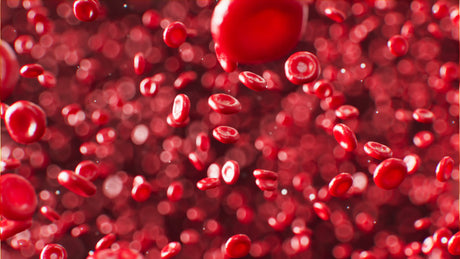Introduction: The Collagen Crisis in Skin Aging
Collagen, the structural protein that gives skin its strength and elasticity, begins to decline at a rate of 1–2% per year after the age of 25. This gradual loss, compounded by environmental stressors like UV radiation and pollution, leads to the formation of fine lines, deep wrinkles, and sagging skin—the hallmark signs of aging. For decades, skincare enthusiasts have sought solutions to replenish collagen, from topical serums to invasive procedures like laser resurfacing and fillers. However, these options often come with limitations: topicals fail to penetrate the dermis where collagen is produced, while invasive treatments carry risks of scarring and downtime. Enter red light therapy, a technology rooted in decades of scientific research that offers a safe, non-invasive way to stimulate collagen production from within the skin.

How Red Light Therapy Activates Collagen Production
The magic of red light therapy lies in its ability to interact with cellular structures called mitochondria—often referred to as the "powerhouses" of cells. Mitochondria contain a key enzyme, cytochrome c oxidase, which absorbs specific wavelengths of red and near-infrared light (typically 630–950nm) . This absorption triggers a cascade of cellular events:
- ATP Production Increase: Light energy is converted into adenosine triphosphate (ATP), the molecule that fuels cellular activity. Enhanced ATP levels give skin cells more energy to perform repair and regeneration functions.
- Fibroblast Activation: Fibroblasts—dermal cells responsible for producing collagen and elastin—become more active under red light stimulation. A study from the University of Wisconsin-Madison found that 630nm red light increased collagen production by five times compared to normal cellular differentiation .
- Reduced Oxidative Stress: RLT decreases levels of reactive oxygen species (ROS), harmful molecules that damage collagen fibers. By neutralizing ROS, red light protects existing collagen while supporting new synthesis .
- Improved Circulation: Red light dilates blood vessels, increasing blood flow to the skin. This delivers more oxygen and nutrients to fibroblasts, further enhancing their collagen-producing capacity .
Critically, red light’s penetration depth is ideal for collagen stimulation. Unlike UV light, which only affects the epidermis, red and near-infrared wavelengths reach the dermis—where 70% of skin’s collagen resides—without causing thermal damage .
Clinical Evidence: Does RLT Really Reduce Wrinkles?
Over 30 randomized controlled trials (RCTs) have investigated RLT’s effects on skin aging, with consistent positive outcomes. A 2024 double-blind study published in Dermatologic Surgery followed 90 participants using 630nm LED devices for 12 weeks. The treatment group showed a 0.8-point reduction in facial wrinkle severity (on a 4-point scale), compared to just 0.2 points in the placebo group . Another trial with 136 volunteers found significant improvements in skin complexion and collagen density after 8 weeks of twice-weekly RLT sessions .
Professional vs. at-home devices both deliver results, though intensity and treatment time vary. Clinical-grade machines (used in dermatology clinics) typically operate at higher power densities (50–100mW/cm²) and require 10–20 minute sessions. At-home devices, like LED panels and handheld tools, use lower intensities (10–30mW/cm²) but are effective with longer, more frequent use (20–30 minutes daily) . A 2023 consumer study found that 82% of at-home RLT users reported softer skin and reduced fine lines after 3 months of consistent use.

Optimal RLT Protocols for Anti-Aging
To maximize collagen production and wrinkle reduction, follow these evidence-based guidelines:
- Wavelength Selection: Choose devices that emit 630–660nm (red) and 810–850nm (near-infrared) wavelengths. This combination targets both superficial fine lines (red light) and deep wrinkles (near-infrared) .
- Energy Dosage: Aim for 20–60 joules per treatment area (e.g., forehead, cheeks). Most at-home devices automatically calculate dosage based on distance and time .
- Frequency: For initial results (4–6 weeks), use RLT 3–5 times weekly. Maintain results with 2–3 weekly sessions.
- Application Tips: Clean skin thoroughly before treatment (avoid lotions with SPF, which can block light). Hold devices 6–12 inches from the face, or use contact-free panels for full-face coverage. Wear eye protection to shield retinas from bright light .
- Complementary Skincare: Pair RLT with collagen-boosting serums (containing hyaluronic acid or vitamin C) to enhance results. Apply serums post-treatment when pores are more receptive .
Safety and Misconceptions
Red light therapy is classified as a low-risk procedure by the FDA, with no reported severe side effects. Unlike UV light, it does not cause sunburn or increase skin cancer risk . Mild temporary redness may occur in sensitive skin, but this fades within hours.
One common misconception is that RLT delivers "instant results." Collagen synthesis is a gradual process—most users see subtle improvements in skin texture after 2–3 weeks, with significant wrinkle reduction at 8–12 weeks . Another myth is that higher intensity equals better results: excessive energy can overwhelm cells, so following recommended dosages is critical.
Why RLT Beats Other Anti-Aging Treatments
Compared to traditional anti-aging methods, RLT offers unique advantages:
| Treatment | Invasiveness | Side Effects | Collagen Boost | Downtime |
|---|---|---|---|---|
| Red Light Therapy | Non-invasive | None (rare redness) | Moderate–High | 0 |
| Chemical Peels | Invasive | Peeling, irritation | Moderate | 3–7 days |
| Dermal Fillers | Invasive (injectable) | Bruising, asymmetry | None (temporary volume) | 1–2 days |
| Laser Resurfacing | Highly invasive | Scarring, hyperpigmentation | High | 7–14 days |
RLT also offers long-term benefits: while fillers and peels provide temporary results, RLT stimulates ongoing collagen production, meaning skin continues to improve with consistent use .
Conclusion: A New Era of Collagen-Boosting Anti-Aging
Red light therapy has evolved from a niche medical technology to a mainstream anti-aging solution, thanks to its proven ability to boost collagen, reduce wrinkles, and improve skin health—all without needles, chemicals, or downtime. Backed by decades of scientific research and clinical trials, RLT addresses the root cause of aging (collagen loss) rather than just masking symptoms. Whether using a professional device at a dermatology clinic or an at-home LED panel, consistent RLT use can help you achieve smoother, firmer, more youthful skin.
As the billion-dollar RLT industry continues to innovate—with advances like AI-personalized dosage and combination therapies—this technology is poised to remain a cornerstone of anti-aging skincare. Say goodbye to wrinkles and hello to collagen-rich skin with the power of red light therapy.
Frequently Asked Questions
Q: How long until I see results from RLT?
A: Most users notice improved skin hydration and texture within 2–3 weeks. Wrinkles begin to soften at 6–8 weeks, with maximum collagen-boosting effects at 12 weeks .
Q: Can I use RLT with other anti-aging products?
A: Yes! RLT enhances the absorption of collagen-stimulating ingredients like hyaluronic acid and retinol. Apply these products immediately after treatment for best results .
Q: Is RLT safe for all skin types?
A: RLT is safe for all skin tones and types, including sensitive and acne-prone skin. Unlike laser treatments, it does not target melanin, so there’s no risk of hyperpigmentation .
Q: Do at-home RLT devices work as well as professional ones?
A: At-home devices are less powerful but effective with consistent use. Professional treatments deliver faster results, while at-home devices offer convenience and long-term maintenance .









